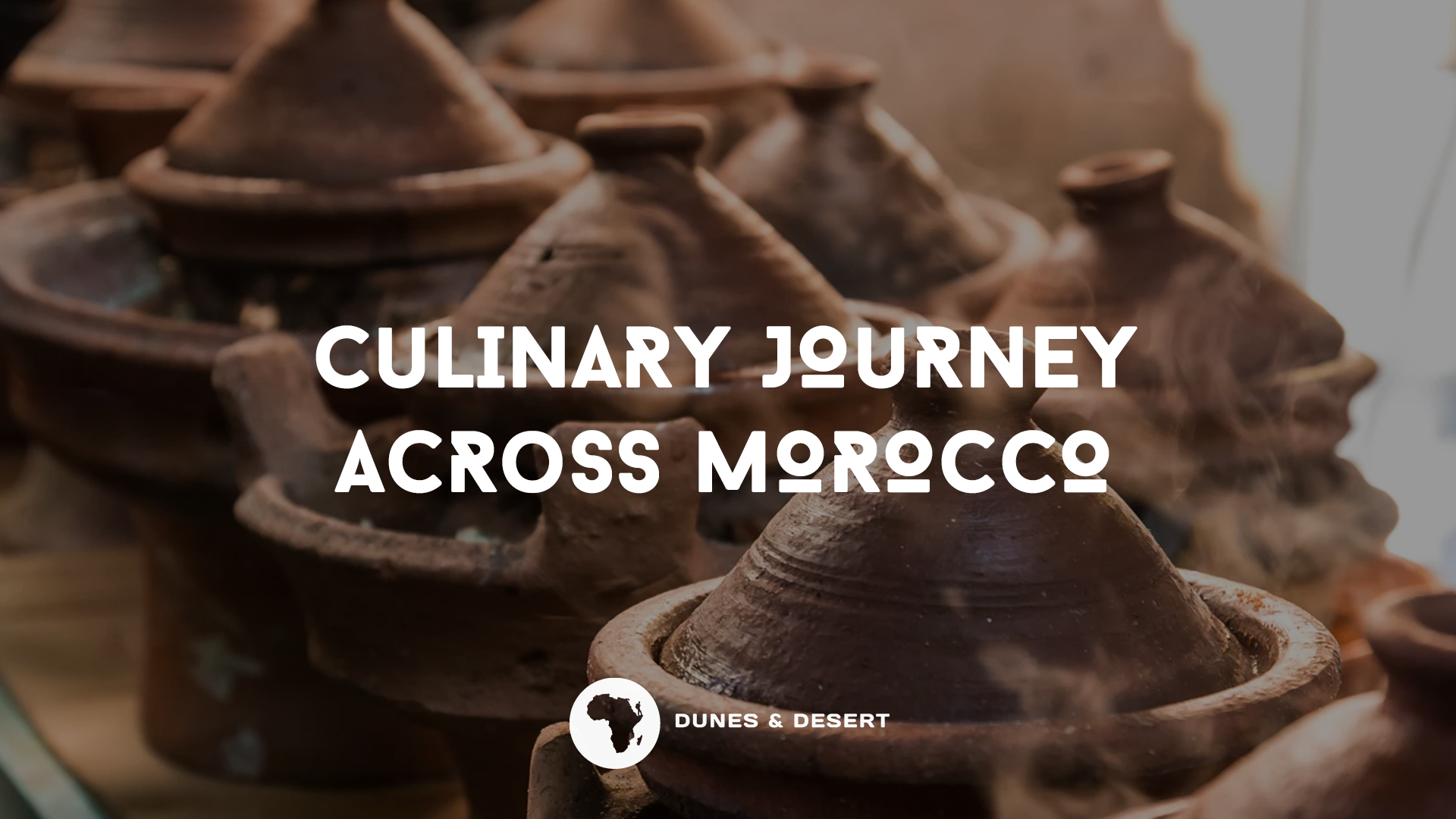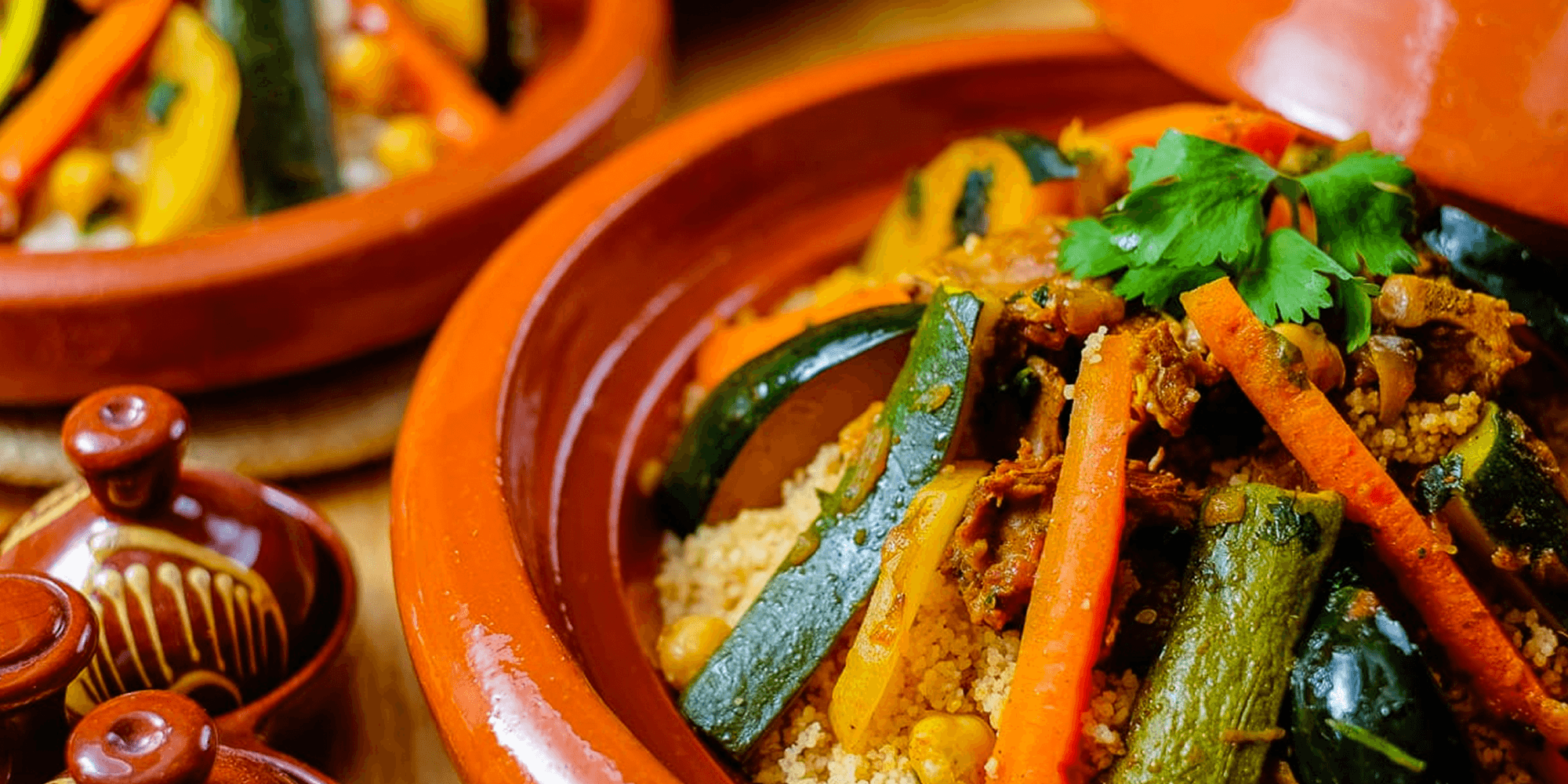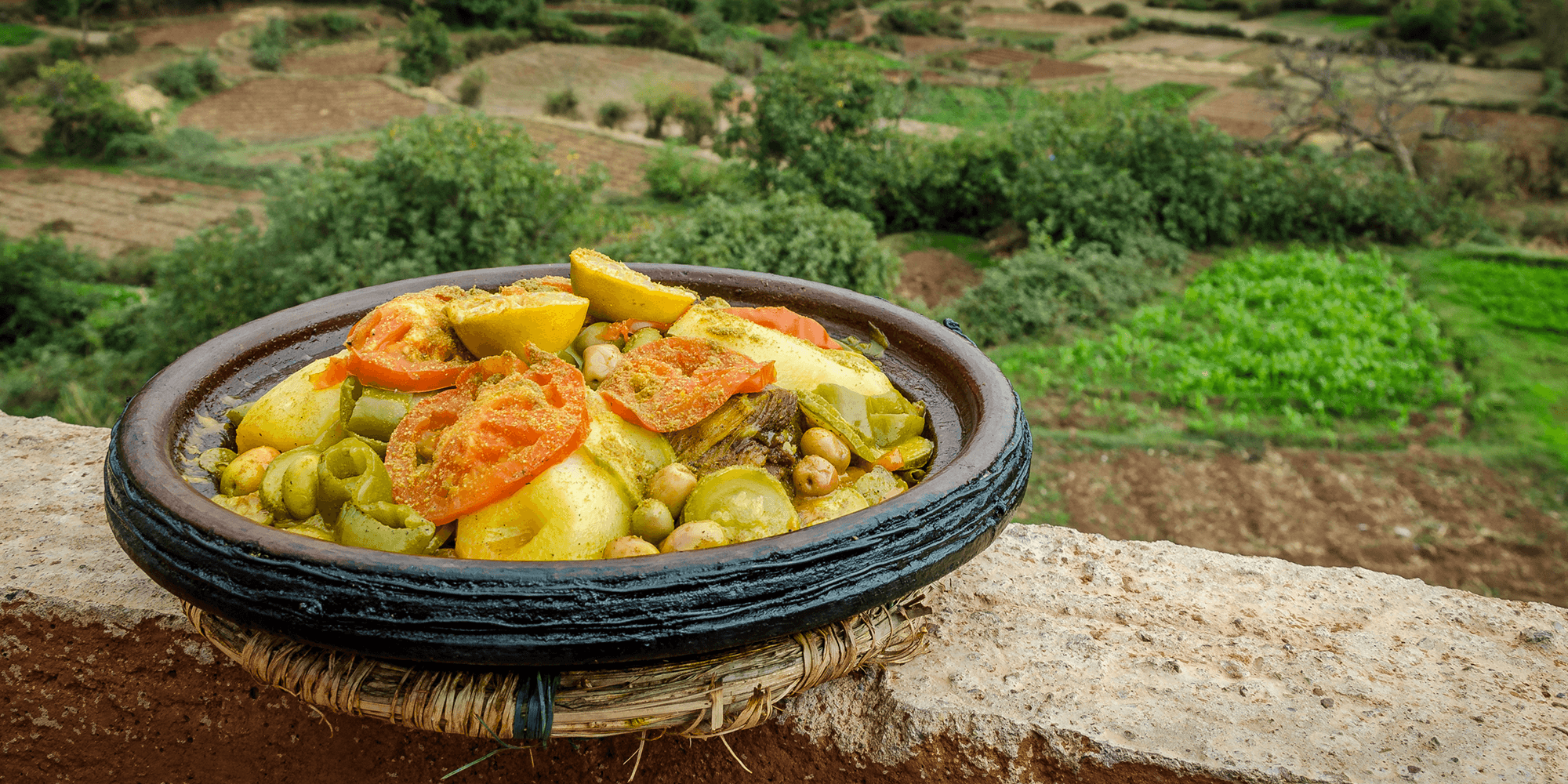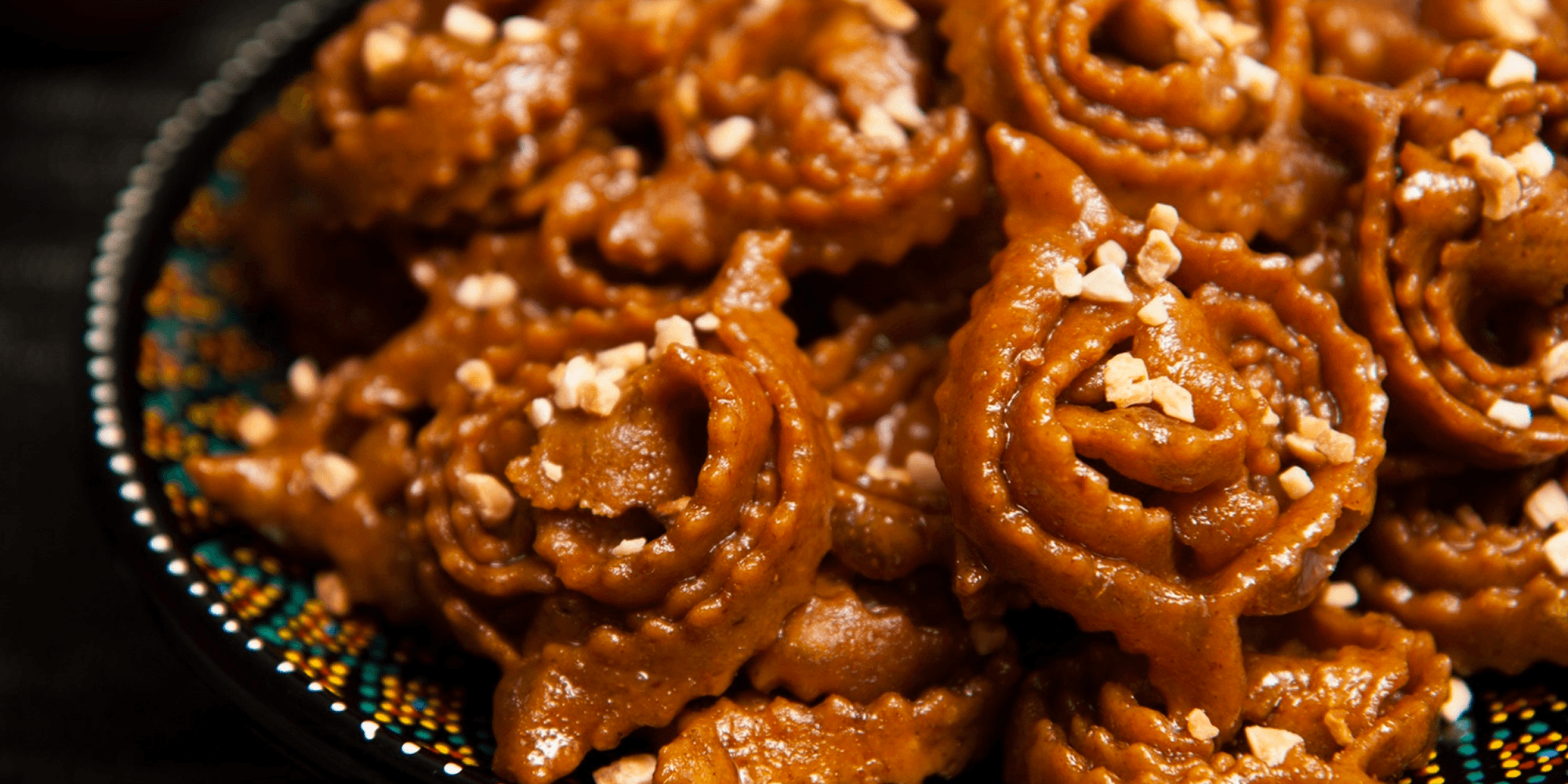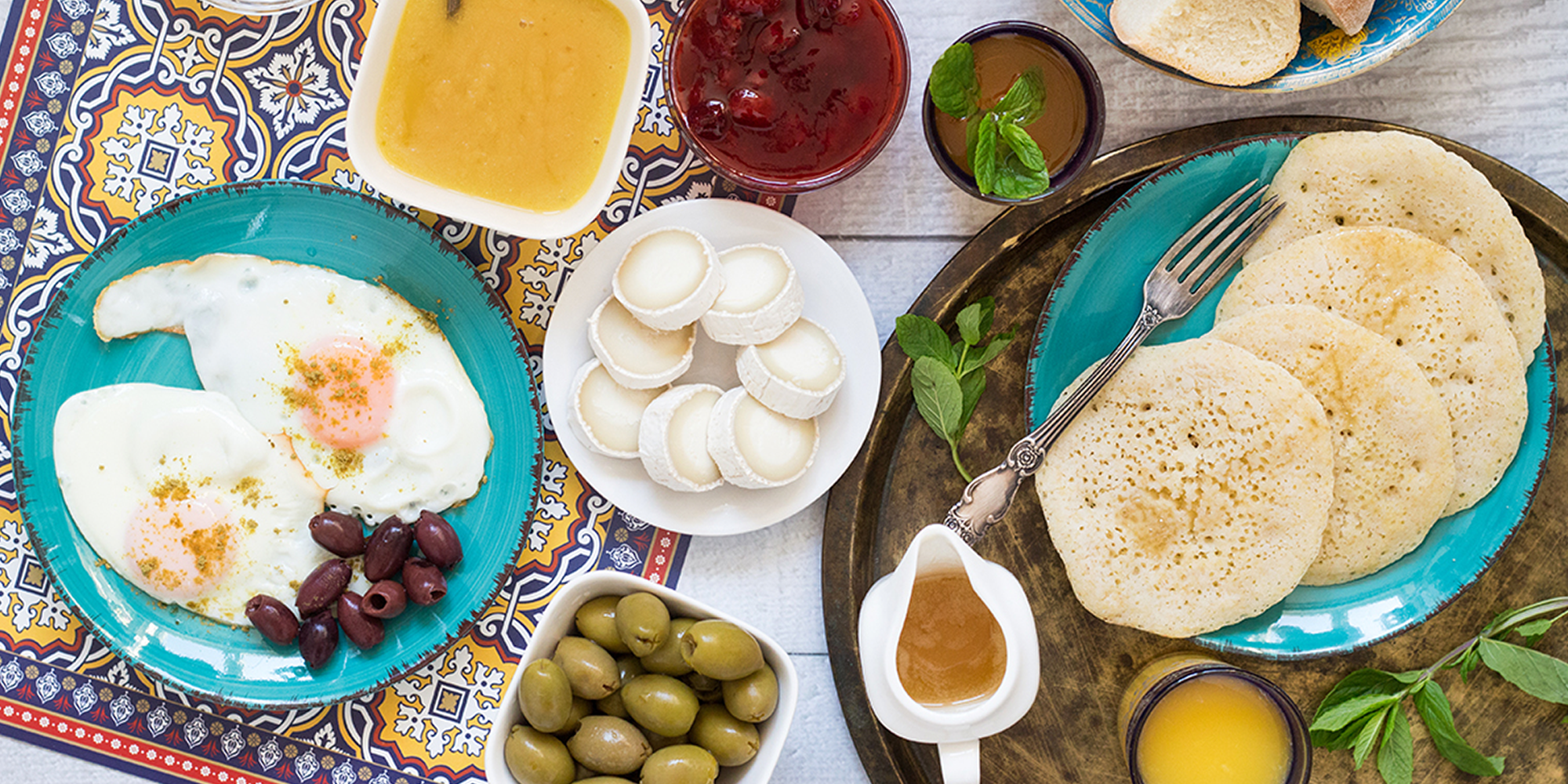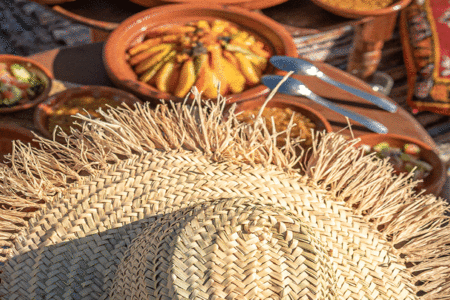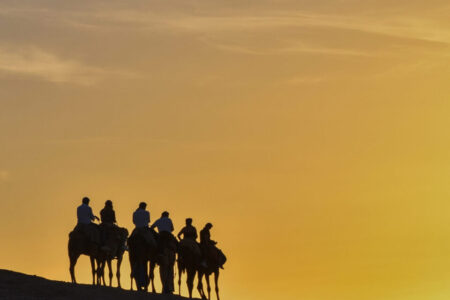During a trip to Morocco, the discovery obviously involves the exploration of the Moroccan food. As rich and diverse as the country, the specialties vary by region. Let’s take a look at one of the most fragrant cuisines in the world, for a journey full of flavors!
First steps with the Moroccan food
In Morocco, meals are particularly important moments. Very friendly, they are almost rituals. Eating with hands is a true tradition.
Please note that you will not find pork-based dishes in traditional restaurants, as it is forbidden for Muslims.
Some must-haves of the Moroccan kitchen
Taste absolutely the famous couscous, on the menu of most restaurants on Friday. Composed of semolina of durum wheat, chickpeas, cooked vegetables and (or not) meat, couscous is still a tradition today, a time to be with family or friends. It is usually accompanied by Lben, a kind of buttermilk obtained from spontaneously fermented raw milk, a sort of Moroccan Lassi.
Another dish not to miss is the tajine, named after the wide, shallow dish, surmounted by a conical lid, made of terracotta, sometimes varnished, which comes from the Berber cuisine. Tagine is a sort of stewed stew, which can be composed of a mixture of meat, poultry or fish, vegetables or fruits and spices, and olive oil.
We will serve you a tajine during our lunch at the inhabitant, planned for all activities that last a whole day: tajine of meat with vegetables, or tajine of chicken with lemon and olives.
Also try the Harira, a typical Moroccan soup. Prepared usually during the month of Ramadan, it’s a rich and delicious soup!
The pastilla is a traditional Moroccan dish, consisting of a kind of laminate (close to the leaf of brik), based on onion, pigeons (or chicken, guinea fowl, or seafood), parsley, coriander, hard-boiled egg and almonds, a mixture of sweet and savory, cinnamon-flavored. It is often served at parties, just before the main course.
The briouats are a kind of Moroccan Samoussas. It is actually a triangular donut stuffed with either spicy meat, vegetables or cheese. To be tested absolutely as input!
The tradition is to start the meal with a simple and fresh Moroccan salad made with tomatoes, red onions and coriander.
If you want to know more about the best restaurants, Dunes & Désert will be happy to share with you its best addresses.
To finish on a sweet and typically Moroccan note, try the milk pastilla, or the traditional pastries: gazelle horns or chebakia.
The breakfast
In Morocco, breakfast is as greedy as varied. On the menu: mint tea, spongy crêpes, olive oil, honey and cream cheese.
The traditional breakfast in Marrakech consists of traditional tasting breads still hot with butter and honey, olive oil or “amlou” (almond, honey and argan oil), fried eggs in the pan, hot mint tea or café au lait, freshly squeezed orange juice, rice pudding with orange blossom water or cinnamon…
The specialty during our breaks at the locals: the msemmens. Msemmens are sorts of square and flaky pancakes. They are traditionally tasted with the amazing duo honey-butter.
Msemmens are served during the breaks of the quad and camel activities:
Street food
Respect some common sense rules for a first approach to street food in Morocco. Even if the street food looks delicious, wait a few days to try the dishes on sale in the street. Not too many worries anyway: Marrakech has been classified by CNN as the best world destinations of the “Street food”.
There are dozens of specialties to taste on the famous Jemaa El Fna square in Marrakech: kefta kebabs or merguez, snail soup, mechoui, or sheep’s head! You should try all those specialties!!

The Art of Tea
In Morocco, the tea time is a real ritual: it is a symbol of hospitality but also of conviviality.
Like the aperitif in Europe, tea is the moment when people meet in conviviality, so that we call it the Moroccan Whiskey!
Do not be surprised that tea is served even in the most unsuspected places such as a shop. And usually it is accompanied by traditional sweets such as gazelle horns.
The tea ceremony is an art. Traditionally, it is the men who prepare the tea according to a specific ritual: one begins by shaking water in a teapot, to which are added dried tea leaves, mint leaves and sugar.
Once infused, the preparation is poured into a glass and then poured into the teapot so that the sugar mixes perfectly and soften the bitterness…

You can of course discover all these flavors and specialties during our activities. Contact us for more information.

